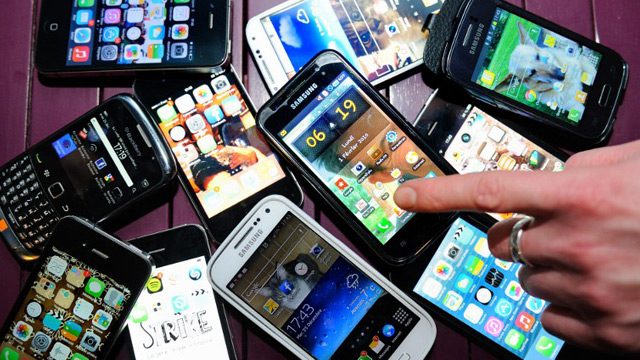SUMMARY
This is AI generated summarization, which may have errors. For context, always refer to the full article.

MANILA, Philippines – The market for smartphones is seen to continue its rise in 2015, while tablets may have a flat year, the International Data Corporation (IDC) said.
The information and communications technology (ICT) firm remains bullish about the smartphone market in the Philippines for 2015, expecting it to grow by 20%.
“The tablet market, on the other hand, is projected to maintain its 2.8 million shipments level in 2014 for this year,” IDC Philippines Client Devices Lead Jerome Dominguez said April 16.
In 2014, the smartphone market grew 76% year-over-year with 12.8 million units shipped, based on fourth quarter 2014 data from IDC Asia/Pacific Mobile Phone Tracker.
Local vendors on top
The proliferation of budget-friendly smart devices from local players fuelled the rise of smartphones and tablets in the country last year, IDC said.
This forced global vendors such as Samsung to flood the market with cheap devices to compete with local offerings.
In response, local vendors pushed further down their prices to compete head-on with China-based and global vendors.
IDC data showed that the total amount of smartphones amounting to below $100 (P4,340) has quadrupled since 2013.
“Already a potent force in 2013, local vendors gained further traction in both smartphone and tablet markets in 2014 on the back of heavy marketing and price-competitive offerings,” Dominguez said.
Local vendors started dominating market share starting second quarter of 2013, grabbing 50% of the smartphone market share. Chinese vendors such as Xiaomi saw their market share top at slightly higher than 30%, while global vendors accounted for the remainder, around 18%.
By fourth quarter 2014, local vendors had cornered slightly higher than 60% of the market, with Chinese vendors at about 27%, and global vendors at an estimated 13%.
Cherry Mobile has been the top vendor of smartphones since fourth quarter 2013 commanding 26%, dethroning the former leader Samsung which now sits second.
Another local player, Myphone, sits in 3rd place with Chinese vendor Lenovo at 4th spot.
Dominguez attributed the dominance of local vendors to price competitiveness.
“The Philippine market is very price sensitive and what still dominates are the budget-friendly phones from local players,” he said.
IDC noted that the sub-P5,000 ($112.70) price segment is projected to grow the fastest in 2015, similarly like last year.
While global vendors have begun to compete in the low end of the market, they have not been as aggressive as the local ones, Dominguez said.
This was reinforced by local vendor’s aggressive push for 2G- or EDGE-enabled devices at a very low cost point, enabling them to cement their dominance in that segment, he added.
Celebrities push sales

Local vendors also tapped popular television and movie starts to endorse their products – a strategy that tugs at the heartstring of celebrity-crazed Filipinos.
Cherry Mobile got actor John Lloyd Cruz to be the face of the brand in 2009, which drew a lot of women toward the brand, Dominguez said.
Cherry Mobile’s stable of endorsers now also include Kris Aquino, Kim Chiu, Anne Curtis, and Sarah Geronimo.
The strategy has proven so successful that Chinese brands, which lack brand awareness in the country, have emulated it with Gionee tapping Ellen Adarna and Acer having Toni Gonzaga, he added.
The fact that local firms dominate market share is unique in the region, said Daniel Pang, IDC Malaysia Southeast Asia senior research manager.
“It’s quite unique in the Philippines, throughout Southeast Asia – you don’t see local vendors growing strong. It indicates the strength of local vendors here,” Pang said.
He added that low cost Chinese vendor Xiaomi has been growing strong throughout the region, but even they were disappointed with their growth in the Philippines.
Tablet market saturating
As for tablets, while hitting a 55.1% growth in 2014, IDC data showed that tablet growth started to slow down toward the end of the year.
“We think that the tablet market is starting to show signs of saturation which we began to see in the second half of 2014,” Dominguez said.
He attributed this to the longer replacement cycle of tablets.
“We noticed that users don’t normally replace as often as phones, usually keeping them for up to 4 years or more,” he said.
The rise in popularity of smartphones, featuring 4.5 inch to 5 inch screens, is also eating into tablet’s market share as consumers increasingly opt for them over tablets.
That screen size seems to be the sweet spot in the market for phones right now and users find this suitable for their daily needs, he added.
Dominguez noted though that while tablets add more functionality, they might be increasingly adopted in the commercial space for use in such sectors as education and insurance.
The low-end segment of tablets also appeals to users in rural areas.
Very cheap 7-inch tablets, which local vendors continue to push, have a big opportunity to do well in rural areas as consumers there place less value on portability, Pang said.
Pang added that in other Association of Southeast Asian Nations (ASEAN) countries, rural consumers will often carry around conventional mobile phones while investing their savings in an affordable tablet to use for entertainment and Internet browsing. (READ: On screen size, Filipinos say ‘biggest is best’) – Rappler.com
$1 = P 44.34
Add a comment
How does this make you feel?





There are no comments yet. Add your comment to start the conversation.